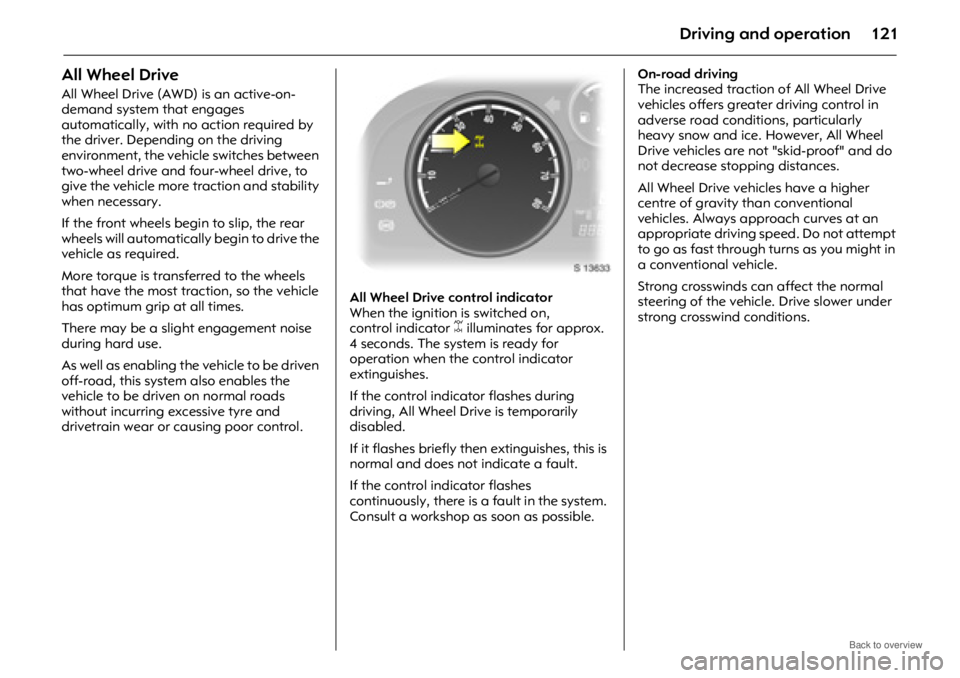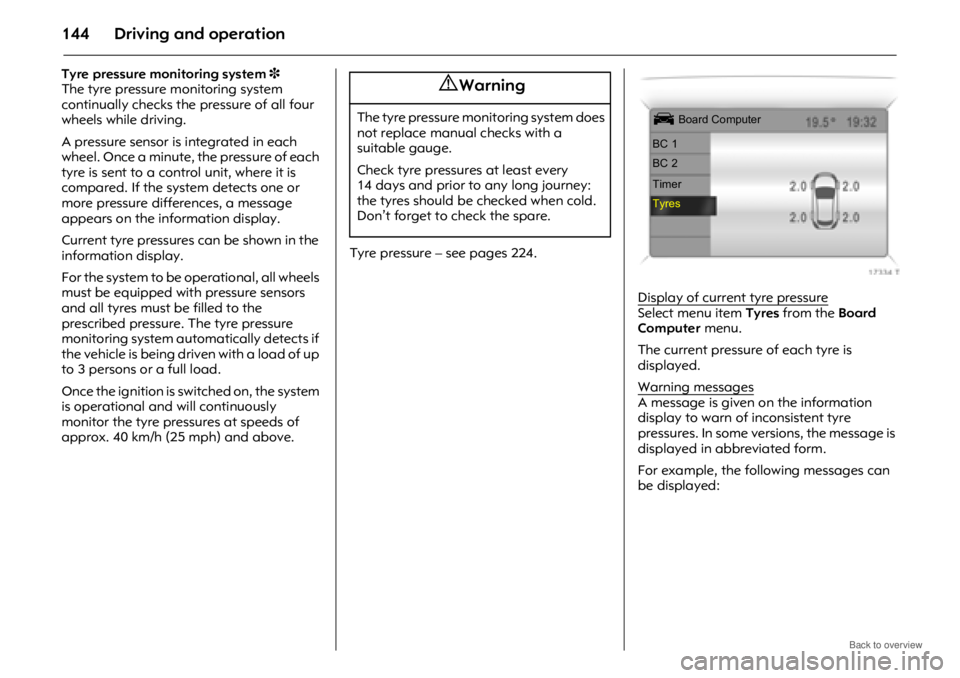four wheel drive OPEL ANTARA 2009 Owners Manual
[x] Cancel search | Manufacturer: OPEL, Model Year: 2009, Model line: ANTARA, Model: OPEL ANTARA 2009Pages: 234, PDF Size: 3.01 MB
Page 121 of 234

Driving and operation121
All Wheel Drive
All Wheel Drive (AWD) is an active-on-
demand system that engages
automatically, with no action required by
the driver. Depending on the driving
environment, the vehicle switches between
two-wheel drive and four-wheel drive, to
give the vehicle more traction and stability
when necessary.
If the front wheels begin to slip, the rear
wheels will automatically begin to drive the
vehicle as required.
More torque is transferred to the wheels
that have the most traction, so the vehicle
has optimum grip at all times.
There may be a slight engagement noise
during hard use.
As well as enabling the vehicle to be driven
off-road, this system also enables the
vehicle to be driven on normal roads
without incurring excessive tyre and
drivetrain wear or causing poor control. All Wheel Drive control indicator
When the ignition is switched on,
control indicator
B illuminates for approx.
4 seconds. The system is ready for
operation when the control indicator
extinguishes.
If the control indicator flashes during
driving, All Wheel Drive is temporarily
disabled.
If it flashes briefly then extinguishes, this is
normal and does not indicate a fault.
If the control indicator flashes
continuously, there is a fault in the system.
Consult a workshop as soon as possible. On-road driving
The increased traction
of All Wheel Drive
vehicles offers greate r driving control in
adverse road condit ions, particularly
heavy snow and ice. However, All Wheel
Drive vehicles are not "skid-proof" and do
not decrease stopping distances.
All Wheel Drive vehicles have a higher
centre of gravity than conventional
vehicles. Always approach curves at an
appropriate driving speed. Do not attempt
to go as fast through turns as you might in
a conventional vehicle.
Strong crosswinds can affect the normal
steering of the vehicle. Drive slower under
strong crosswind conditions.
Page 144 of 234

Driving and operation144
Tyre pressure monitoring system3
The tyre pressure monitoring system
continually checks the pressure of all four
wheels while driving.
A pressure sensor is integrated in each
wheel. Once a minute, the pressure of each
tyre is sent to a control unit, where it is
compared. If the system detects one or
more pressure differences, a message
appears on the information display.
Current tyre pressures can be shown in the
information display.
For the system to be operational, all wheels
must be equipped with pressure sensors
and all tyres must be filled to the
prescribed pressure. The tyre pressure
monitoring system automatically detects if
the vehicle is being driven with a load of up
to 3 persons or a full load.
Once the ignition is switched on, the system
is operational and will continuously
monitor the tyre pressures at speeds of
approx. 40 km/h (25 mph) and above. Tyre pressure – see pages 224.
Display of current tyre pressure
Select menu item Tyres from the Board
Computer menu.
The current pressure of each tyre is
displayed.
Warning messages
A message is given on the information
display to warn of inconsistent tyre
pressures. In some versions, the message is
displayed in abbreviated form.
For example, the following messages can
be displayed:
9 Warning
The tyre pressure monitoring system does
not replace manual checks with a
suitable gauge.
Check tyre pressures at least every
14 days and prior to any long journey:
the tyres should be checked when cold.
Don’t forget to check the spare. Ü Board Computer
BC 1
BC 2
Timer
Tyres